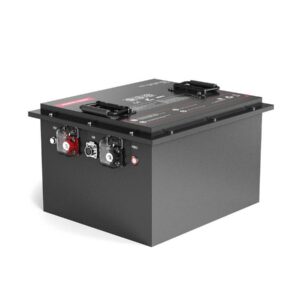
What does the R mean in battery size?
The letter “R” in battery size codes universally denotes a cylindrical shape, as standardized by the International Electrotechnical Commission (IEC). For example, in a lithium-ion battery labeled “R20,” the “R” confirms its cylindrical form, while “20” specifies a diameter of 20mm. This naming convention applies across battery types, including alkaline and lithium-based systems, ensuring interoperability and precise mechanical compatibility.
Are Duracell Car Batteries a Good Choice for Your Vehicle?
How does the IEC standard define battery shapes?
The IEC 61960 standard classifies batteries by chemistry, shape, and dimensions. Letters like “R” (cylindrical), “P” (prismatic/square), and “F” (flat) indicate form factors. For instance, an “R14505” lithium battery combines shape (R=cylinder), diameter (14.5mm), and height (50.5mm). Pro Tip: Always cross-reference the full code—misinterpreting “R” as a chemistry marker could lead to incompatible replacements.

Beyond basic shape identification, the IEC system ensures dimensional precision. A standard R20 alkaline cell (like those in flashlights) measures exactly 34.2mm tall with a 14.5mm diameter. Transitional phrase: While shape seems straightforward, consider this—what happens if a device requires the torque resistance of cylindrical cells but gets square ones? The mechanical mismatch could damage battery contacts. Real-world example: Tesla’s 21700 cells use “21” for 21mm diameter and “70” for 70mm height—critical for their battery pack’s thermal management.
| Code Element | Meaning | Example |
|---|---|---|
| First Letter | Chemistry (L=Li-ion) | LIR2450 = Lithium Coin Cell |
| Second Letter | Shape (R=Round) | CR2032 = Cylindrical Lithium |
| Numbers | Dimensions (mm) | 18650: 18mm⌀ x 65mm height |
Why do cylindrical batteries dominate EV applications?
Cylindrical cells (R-type) offer structural stability and efficient thermal management—critical for electric vehicles. Their circular cross-section enables uniform pressure distribution in battery packs, reducing stress points during rapid charging cycles. Transitional phrase: But what about energy density? Surprisingly, Tesla’s 4680 cells (46mm⌀ x 80mm height) achieve 16% greater range than prismatic alternatives through improved cell-to-pack integration.
Practically speaking, cylindrical formats simplify manufacturing scalability. An R20 production line can output 20% more cells hourly than prismatic equivalents due to standardized winding processes. Pro Tip: When replacing EV battery modules, always match the original R-coded dimensions—even 1mm differences in diameter can compromise cooling system contact.
How are dimensions encoded after “R”?
The numbers following “R” specify diameter and height in millimeters. In an 18650 cell (18mm⌀ x 65mm tall), the “650” sometimes gets rounded—actual height is 65.0mm. Transitional phrase: This precision matters immensely—a misinterpreted R14505 (14.5mm⌀ x 50.5mm) versus R14650 (14mm⌀ x 65mm) could result in a 30% capacity error.
Real-world example: Duracell’s Coppertop R20S actually measures 14.5mm⌀ x 50mm—the “S” denotes a steel外壳 variant. Warning: Some manufacturers append letters for special features (e.g., “R20P” for high-drain pulse capability), which aren’t IEC-standardized—always verify datasheets.
Battery Expert Insight
FAQs
Does “R” ever represent chemistry instead of shape?
No—the first letter indicates chemistry (e.g., L=Li-ion). “R” always denotes cylindrical form, appearing as the second character in IEC codes like CR2032 (C=LiMnO2, R=Round).
Why do some R-coded batteries have three numbers?
Three-digit codes (e.g., R154230) specify diameter (15.4mm), height (42.3mm), and sometimes terminal type. Always consult manufacturer specs for non-standard notations.
